Ever since I took an environmental course my junior year of high school, I have religiously been doing Meatless Mondays. I have even documented my Monday meals on my Instagram to not only keep me accountable but show my friends how easy it is and that this simple action is doable. Since I live with my family, Meatless Mondays have been adopted by all of them (at least for dinner), which I think is a big step for a meat-eater family. Now in college, I continue with this tradition, and while there are limited options for a vegetarian meal for a picky eater like me, I am dedicated to keeping following through with it. I have even started to influence the friends I eat lunch with to join me on no meat Mondays.
Now, the real question is why am I doing this? Will eating no meat for only one day a week really have any positive benefits on the environment? Well, let’s find out!
Brief History:
Surprisingly, the reason for Meatless Monday, or any day of advertised no meat, started over 100 years ago in the United States as an effort to ration food for the war. Then in 2003, Meatless Mondays resurfaced to encourage people to eat less red meat for health reasons. Now in 2021, while there is a multitude of reasons for eating no meat, the biggest factor is an environmental one.
The Issue:
Greenhouse gases (GHG) are gases that act as a thermal blanket for the earth, keeping the surface of the Earth warm enough for humans to survive. Over the last century, the amount of greenhouse gases in the atmosphere has increased greatly, much of it caused by human activities, primarily burning of fossil fuels (coal, hydrocarbon gas liquids, natural gas, and petroleum) for energy use. Most climate scientists agree the main cause of the current global warming trend is human activities that have caused increased levels of GHG in the atmosphere. Global GHG emissions come from different sectors, including electricity, transportation, industry and agriculture. While agriculture sector may seem insignificant to other sectors, it should not be overlooked. GHG emissions from agriculture have increased by 10.1 percent since 1990. In 2010 the food system overall emitted an estimated 5.2 billion tons of carbon dioxide (CO2) equivalents, and three-fourths of these emissions were from the production of animal products. Researchers estimate that between 2010 and 2050, in the absence of technological changes and mitigation measures, the environmental impact of the food system could increase by 50 to 92 percent due to a growing population and changing diets.
Water Use:
With water scarcity being a global issue, it is important to reduce our water usage whenever we can. It takes a lot of water to produce meat, especially beef, which has the highest water footprint of all foods. The water footprint of any animal-based food is larger than the water footprint of many plant-based foods with similar nutritional values. Considering all stages of production, one kilogram of beef requires nearly 40 times more water compared to the same amount of vegetables. A hamburger made with one quarter pound of beef requires 425 gallons of water to produce. The water use primarily comes from growing feed crops, raising the animals, and waste treatment. Eating a more plant-based diet could decrease agricultural water use by 50 percent.
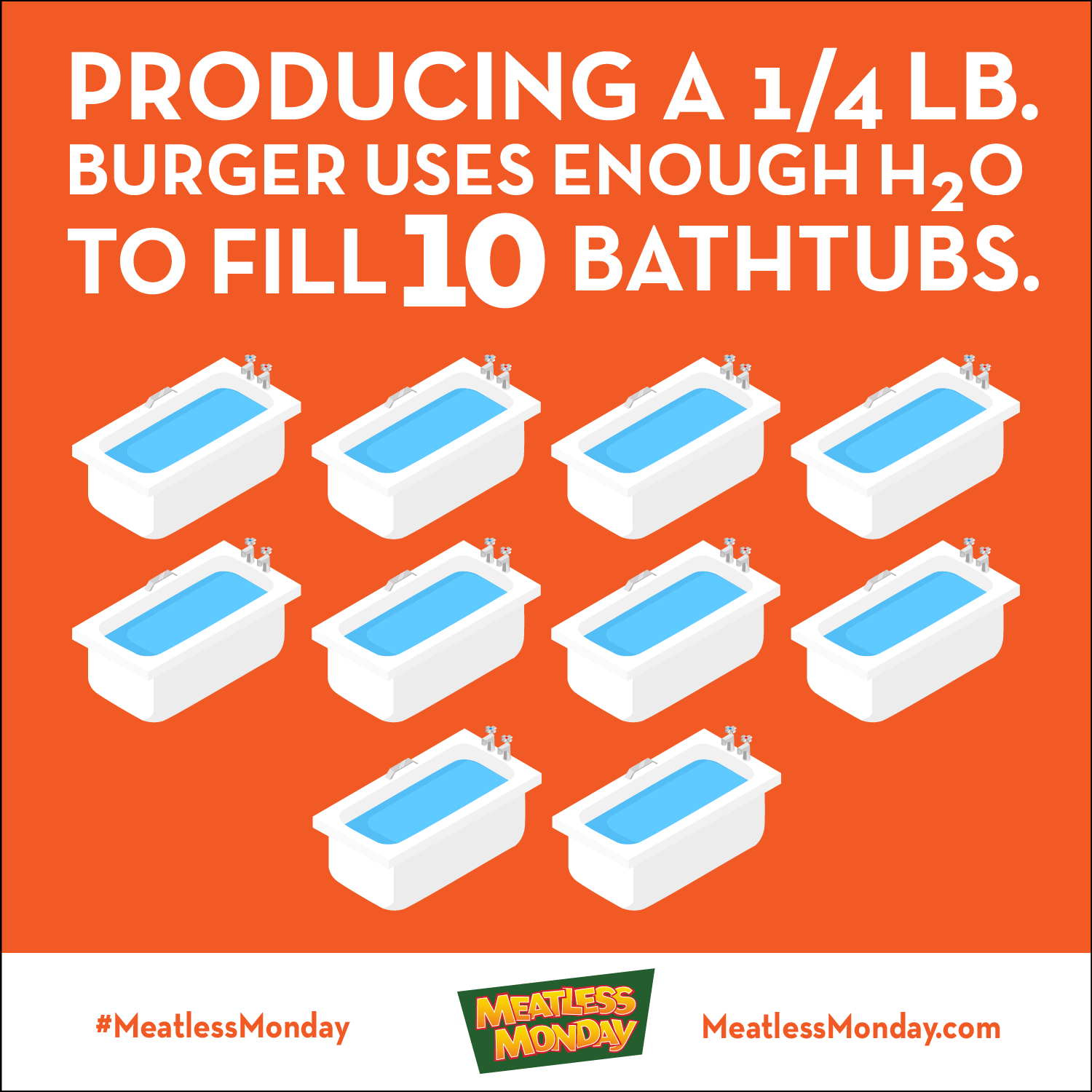
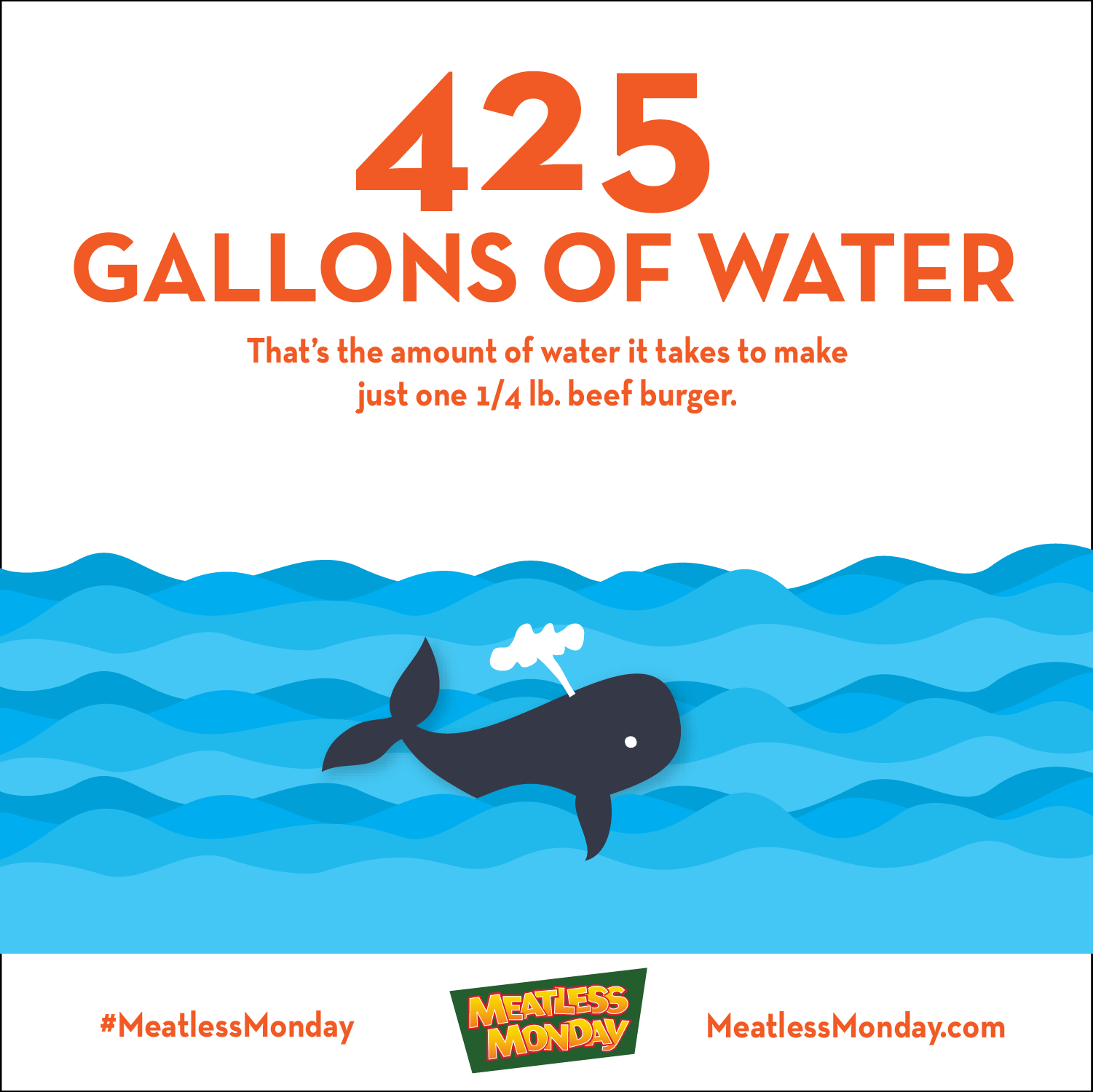
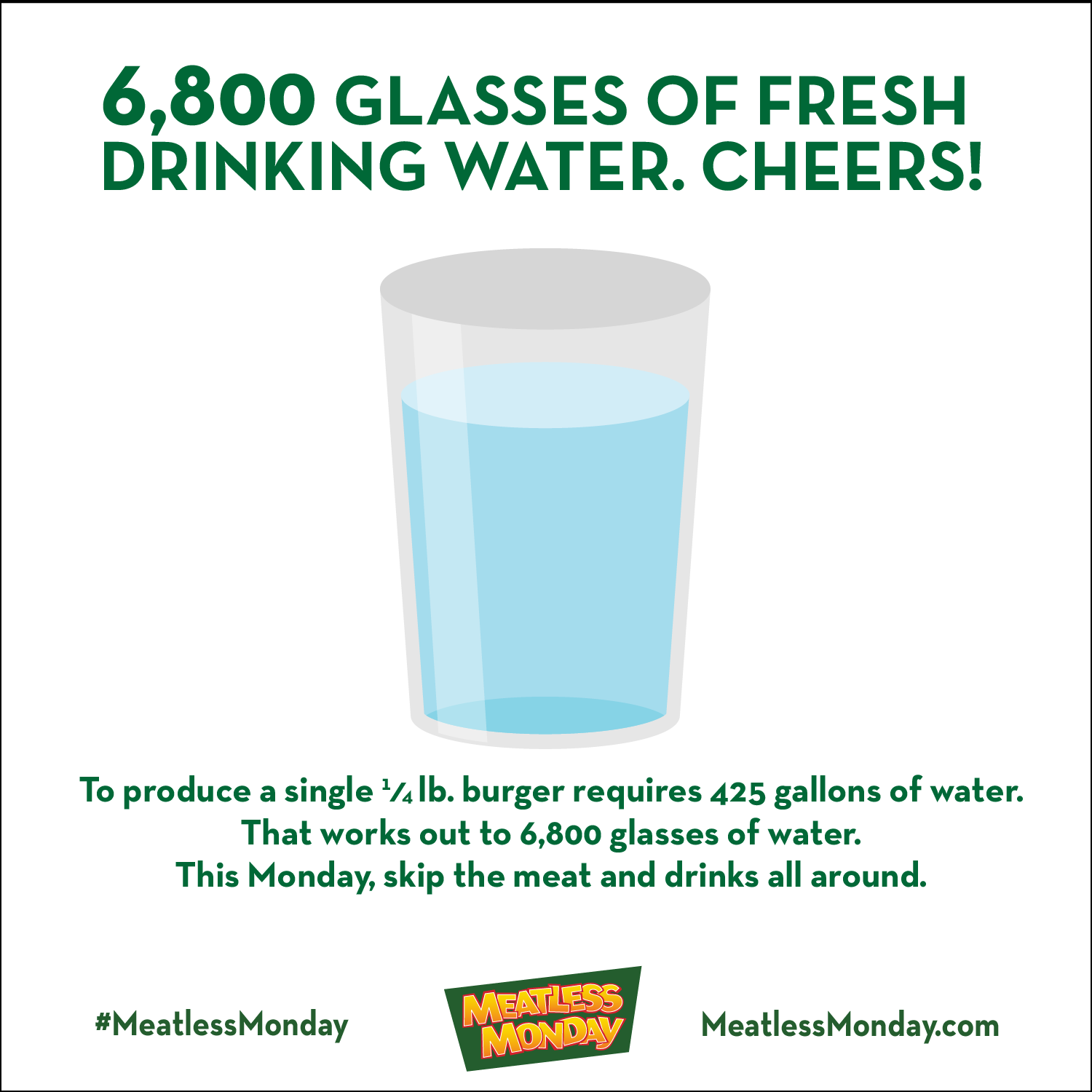
Land Use:
Raising animals for meat, dairy, and egg production requires a significant amount of land, leading to deforestation and the loss of other carbon-sequestering natural lands. Livestock production uses 75 percent of the earth’s agricultural land, primarily for beef and dairy cattle grazing and growing crops for animal feed. Rain forests and other natural lands are also cleared for cattle grazing and feed crop production, which further intensifies the carbon impact of animal production. The meat industry is the most significant driver of land-use change. Approximately 13 billion hectares (50 million square miles) of forest area are cleared for agricultural purposes each year. Shifting to a more plant-based diet could decrease agricultural land use by 80 percent.
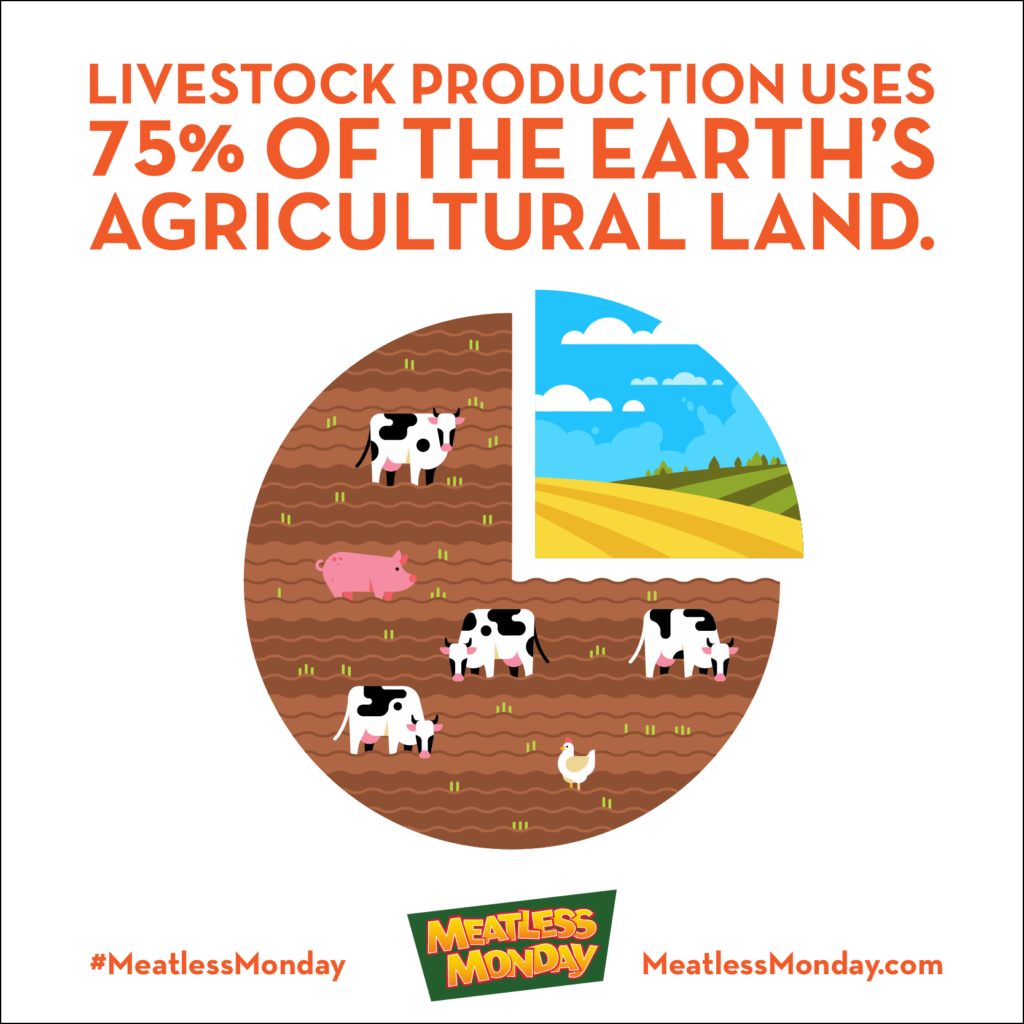
Biodiversity and Species Loss:
Livestock production is the biggest human contributor to species decline and has led to over 60 percent decline in species populations since 1970. Agricultural activities cause eutrophication, a process whereby excessive algal growth depletes the aquatic oxygen supply, creating what are referred to as “dead zones.” Eutrophication is the leading cause of habitat loss globally. Wide-scale dietary shifts from heavy meat consumption to plant-based diets, would provide benefits for soil health and biodiversity.
Shifting to a More Plant-Based Diet:
Reductions in meat consumption can have a profound effect on the environment. A systematic review of potential changes in GHG emissions, land use, and water use from shifting current dietary patterns confirmed the greatest positive impacts of dietary shifts will come from eating less meat from ruminant animals, eating less dairy and meat from other sources, and eating more plant based foods. Another study calculated the impact of following global dietary guidelines for red meat, sugar, fruits, vegetables, and total energy intake and predicted a decrease in GHG emissions by 29 percent compared with 2050 “business as usual” projections. Note how it only says, “dietary guidelines” and not a full vegetarian or vegan diet. One does not need to cut out meat completely for changes to occur, they just need to reduce their consumption. Further replacing most animal products with less GHG-intensive food types (greater amounts of vegetables, fruit, nuts, and legumes) in a flexitarian diet would represent a 52 percent decrease in GHG from what is projected with “business as usual” scenarios. Addressing food waste and technology solutions would reduce GHG emissions even further.
Meatless Mondays?
With meat consumption increasing rapidly around the globe, the developed world needs to shift to a more sustainable approach to meat consumption. Meatless Monday is the perfect first step to make this sustainable change. Just as it did for me, it promotes a healthier lifestyle of thinking about your food choices and eating food that has a lower carbon footprint. We don’t need only meat to survive, but if you can’t give up on meat, reducing your consumption of it is also a great start. In the US, substituting meat with plant-based foods one day a week could reduce one person’s diet-related GHG footprint by nearly 5 percent, based on the typical US diet. If 30 percent of the US population practiced Meatless Monday, the overall decrease in diet related GHG emissions for the United States alone would be about 1.5 percent, which is equal to the impact of the estimated number of current vegans and vegetarians! This once again emphasizes the point that we don’t need 100 people eating no meat, but 1,000 people eating less meat! Globally, eliminating meat for one day per week could reduce diet-related GHG emissions by an estimated 1.0 to 1.3 Gigaton (Gt) per year relative to predicted scenarios based on current consumption patterns. Reducing emissions by 1.3 Gt would be equivalent to taking 273 million cars off the road, based on the typical passenger vehicle in the United States, which is equivalent to the number of cars in the US in 2017.
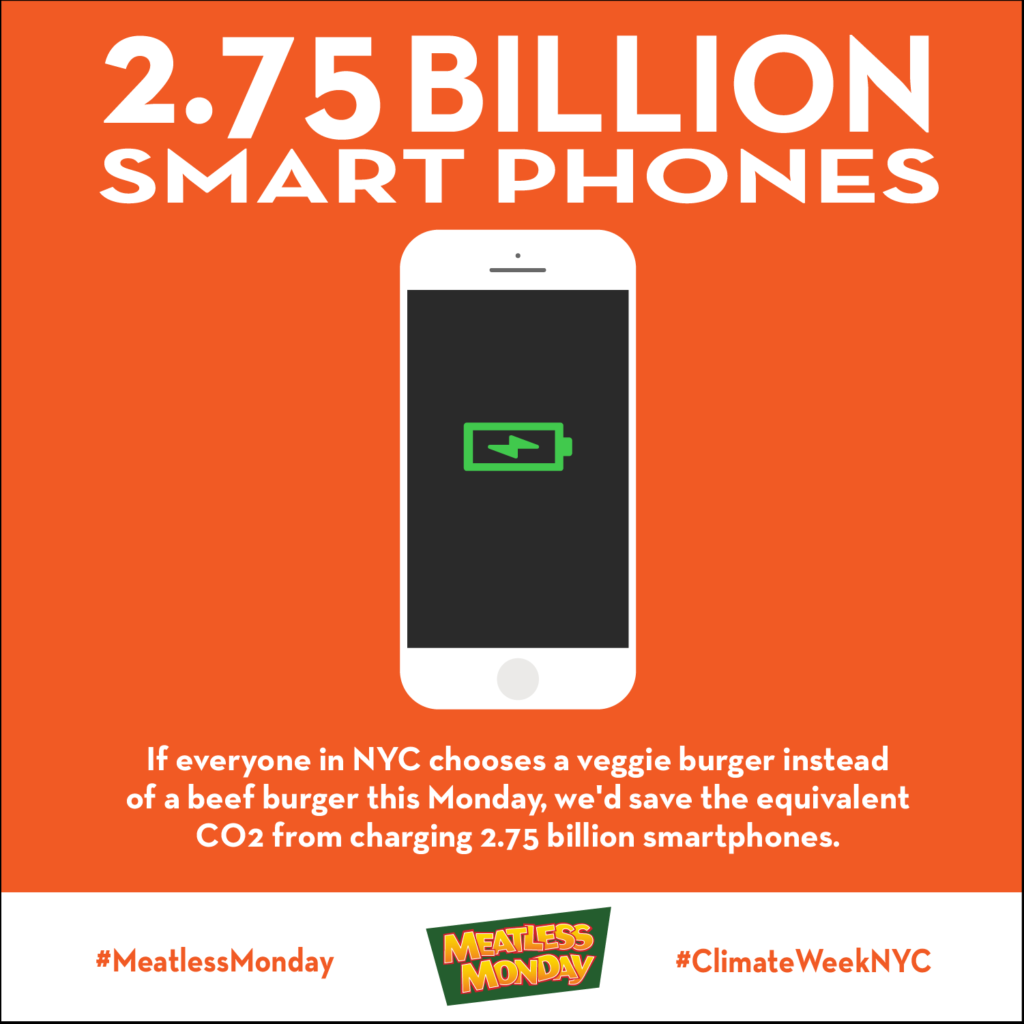
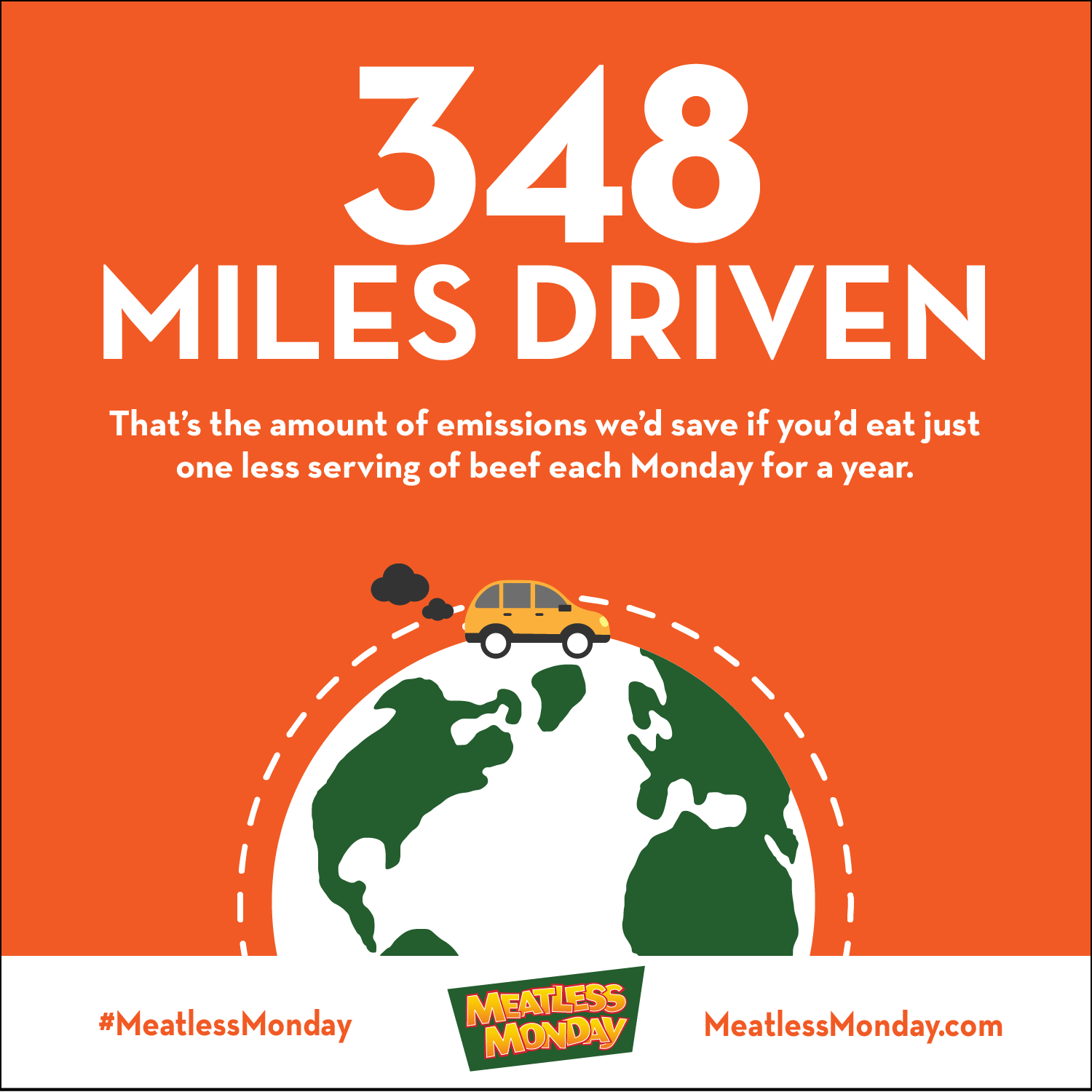
Conclusion:
While there is still so much to research on this topic (animal cruelty, health benefits, “fake” meat, etc…), I think it is safe to say eating no meat a day does have an impact. If given the chance, try reducing your own meat consumption and maybe start your own Meatless Monday traditions. The more the merrier!
Sources:
Environmental Research About Meatless Monday – Meatless Monday. 28 July 2020, www.mondaycampaigns.org/meatless-monday/research/environment#_edn2.
Meat and Climate on Your Plate. Oct. 2019, clf.jhsph.edu/sites/default/files/2019-10/global-meatless-monday-climate_0.pdf.
Parker, Cindy L. Slowing Global Warming: Benefits for Patients and the Planet. 1 Aug. 2011, www.aafp.org/afp/2011/0801/p271.html.
Sources of Greenhouse Gas Emissions. 4 Dec. 2020, www.epa.gov/ghgemissions/sources-greenhouse-gas-emissions.
PS: This isn’t related to the blog, but I wanted to let everyone know of my misfortune that when I was halfway through writing this, my computer decided not to save anything for when I opened it the next day… but oh well:’)



